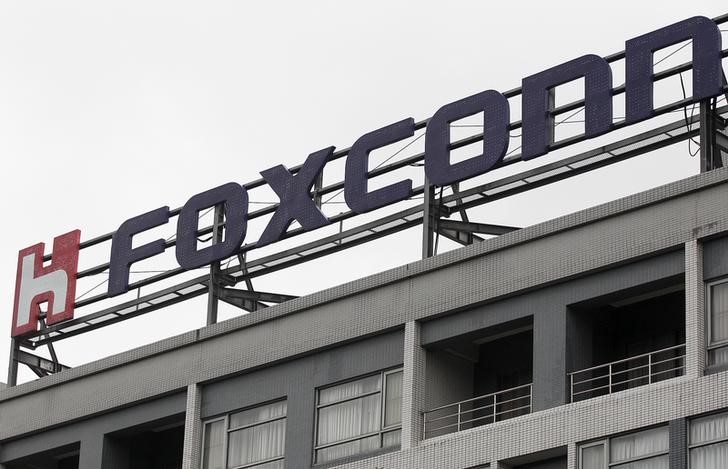By Se Young Lee
SEOUL (Reuters) - With its acquisition of Japan's Sharp Corp (T:6753), Foxconn aims to gain access to promising technology for high-end OLED screens likely to be used in future devices from Apple Inc (O:AAPL), the electronics assembler's biggest customer.
But even with Foxconn's backing, Sharp faces a tough challenge to catch up with rivals already looking ahead to more advanced display panels such as 'foldables'.
And industry experts also say Chinese display makers such as BOE Technology Group and Tianma Microelectronics (SZ:000050) are, in turn, fast catching up on OLED, or organic light emitting diode, technology.
Foxconn - formally known as Hon Hai Precision Industry Co (TW:2317) - already has a range of flat screen businesses, and the addition of Sharp, which supplies screens for iPhones, will make it the world's top liquid crystal display (LCD) panel maker.
While loss-making Sharp owns core technologies required to produce OLED, it has never commercially produced it, and there are risks that others may be faster and nimbler.
"By the time Sharp ramps up OLED, Chinese panel players may have caught up, which means it's not just Hon Hai in this game," said Vincent Chen, analyst at Yuanta Investment Consulting in Taipei. "Hon Hai's investment risk with the Sharp deal is relatively bigger."
CHASING SAMSUNG
For now, Samsung Display, a unit of Samsung Electronics (KS:005930), has a near monopoly in manufacturing smartphone OLED, with others jockeying for position to be able to supply Apple which is widely expected to use OLED displays in its iPhones from as early as next year.
LG Display (KS:034220), which produces OLED screens for televisions, is moving into smartphones and could boost capacity for the smaller-sized panels through a 10 trillion won ($8.8 billion) plant due to start production in the first half of 2018.
Sharp plans to spend 200 billion yen ($1.8 billion) to start mass production of OLED around the same time, with output of 90 million 5.5-inch smartphone screens by 2019 - around a third of Samsung Display's OLED smartphone panel shipments - analysts say. Japan Display Inc (T:6740) also plans to start mass production in 2018.
In comments to Reuters, LG Display said it expected only a limited impact on its business from the Foxconn/Sharp deal. "However, given the technological prowess Sharp used to have, LG Display will ... not dismiss possible competitive situations."
Samsung Display declined to comment on its investment plans or on Foxconn's OLED plans.
All this should be welcome news for Apple as it will broaden the supplier base, with the OLED market seen growing 16 percent a year to $44 billion by 2020, according to a Markets and Markets report.
But new entrants will have to source chemicals and equipment which are often hard to acquire, and margins may be less than hoped for as the initial production stage is typically low yield.
"By the time new entrants arrive en masse, they'll be mainly churning out what Samsung's manufacturing now, while Samsung may have shifted to more advanced panels like foldable screens," said Lee Sang-un, analyst at Yuanta Securities in Seoul. "Samsung will still have that first-mover advantage."
COSTLY INVESTMENT
Apple's switch to OLED from LCD, or liquid crystal display, will require the supply chain to spend around $9 billion just for iPhones, according to research firm Cowen and Co.
By 2019, that investment may almost double to around $16 billion to supply all the estimated 815 million smartphones using OLED - around 43 percent of all smartphones.
OLED is seen as an ideal display for wearable devices such as virtual reality headsets and smartwatches, given its high resolution, flexibility, brightness and quick response time.
But the next-generation technology remains a risky bet in an industry where smartphone demand is slowing and margins are thin. Billions of dollars are likely to be spent on building production lines that yield no profit for several years.
"For some LCD panel manufacturers, OLED production may be too much of an investment, especially when that may result in increased competition against their own LCD products," said Eric Chiou, a researcher at TrendForce.
"Producing OLED panels means taking on an enormous amortization cost ... and there may be a long interim period before seeing profits."
($1 = 1,138.5100 won)
($1 = 112.4000 yen)
